Note that the table in Joel's article covers code points that do not, and never will, exist in Unicode. In fact, UTF-8 never needs more than 4 bytes, though the scheme underlying UTF-8 could be extended much further, as shown.
A more nuanced version of the table is available in How does a file with Chinese characters know how many bytes to use per character? It points out some of the gaps. For example, the bytes 0xC0, 0xC1, and 0xF5..0xFF can never appear in valid UTF-8. You can also see information about invalid UTF-8 at Really good bad UTF-8 example test data.
In the table you showed, the Hex Min and Hex Max values are the minimum and maximum U+wxyz values that can be represented using the number of bytes in the 'byte sequence in binary' column. Note that the maximum code point in Unicode is U+10FFFF (and that is defined/reserved as a non-character). This is the maximum value that can be represented using the surrogate encoding scheme in UTF-16 using just 4 bytes (two UTF-16 code points).
